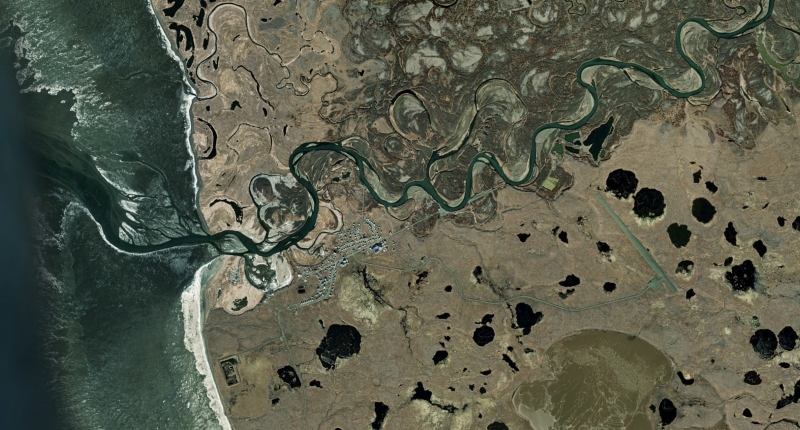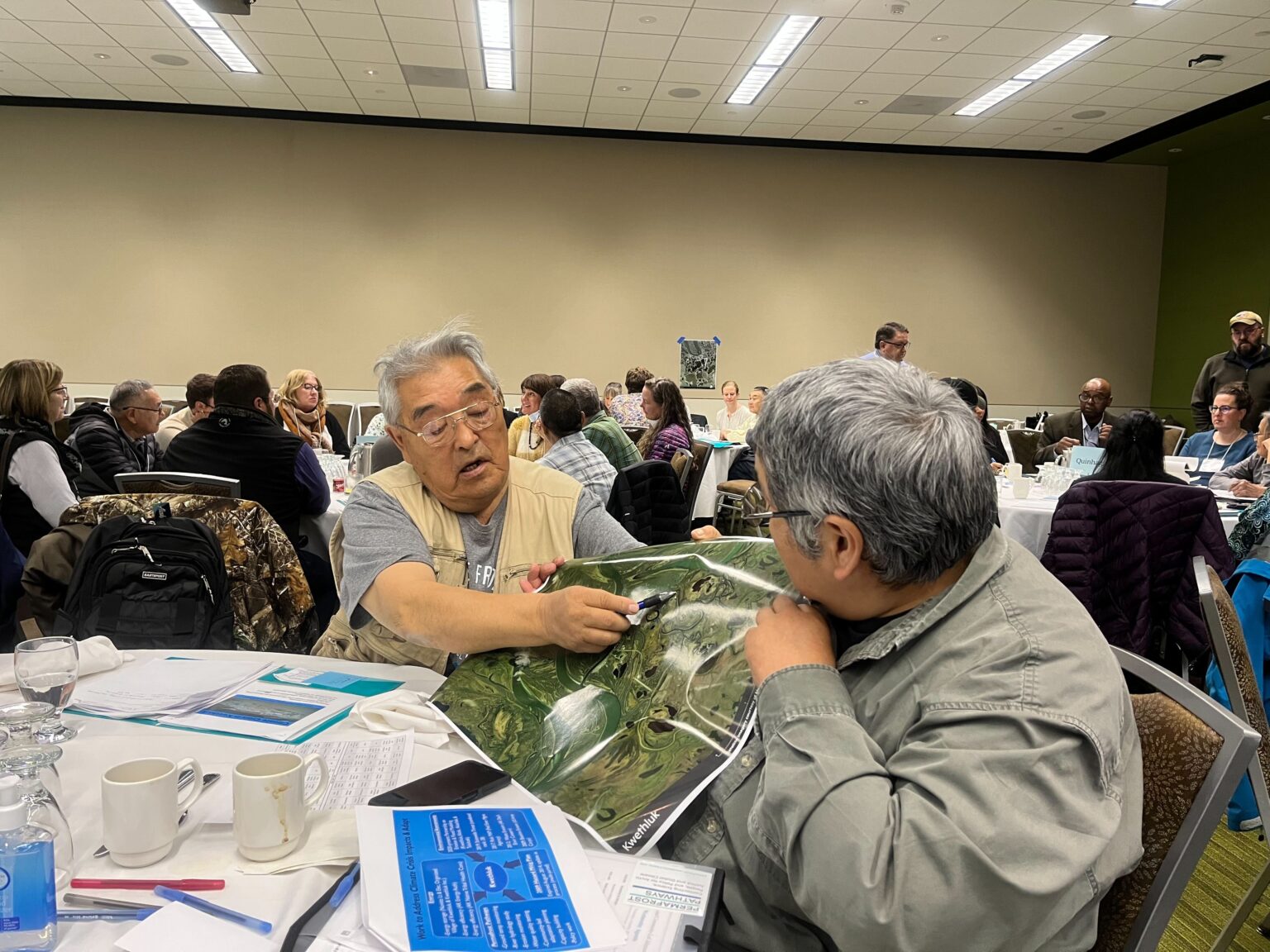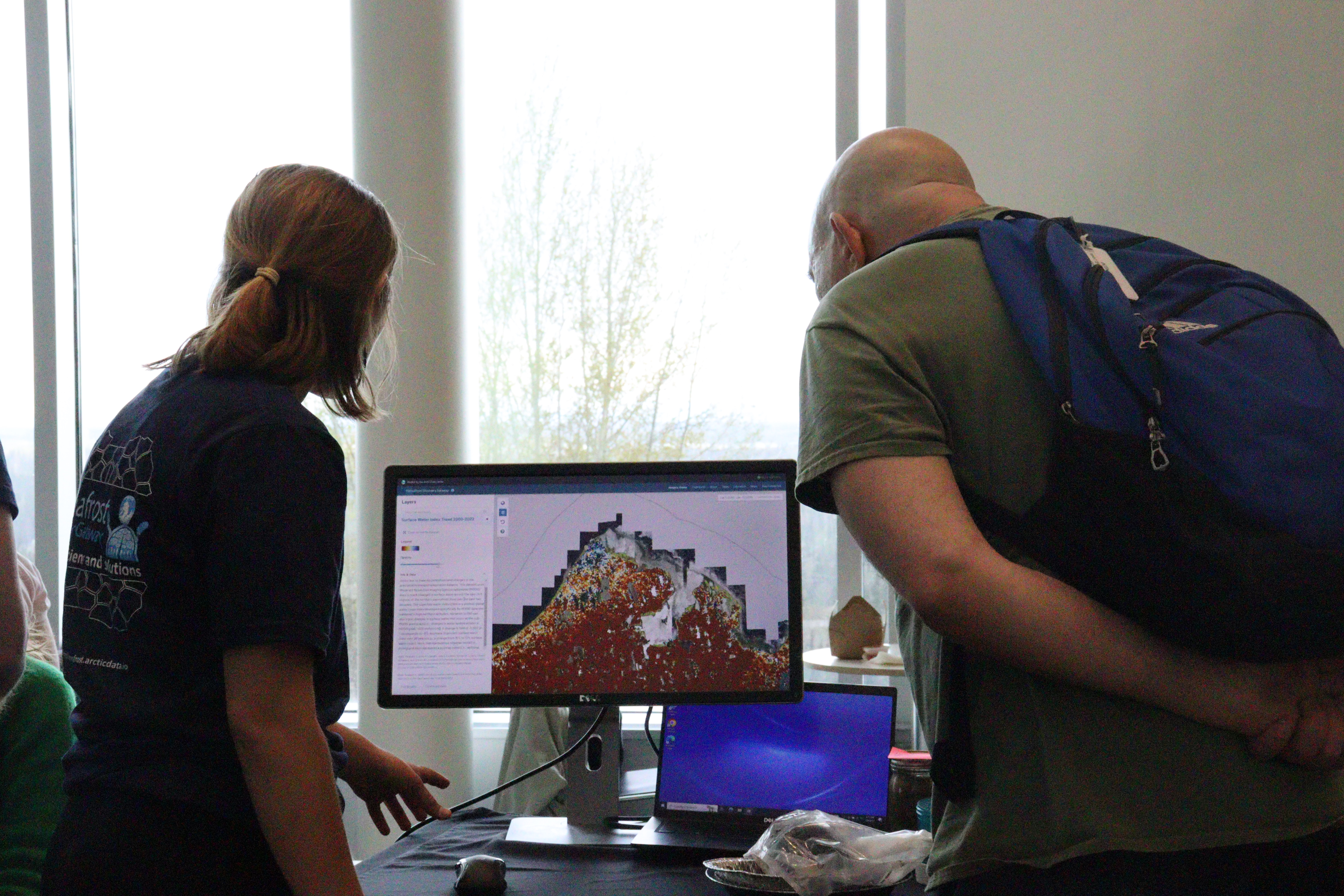Collective Action for a Changing Arctic

Within 25 years, 3.3 million people who live in the Arctic will lose their homes due to melting permafrost. As the Arctic heats at four times the global rate, this frozen ecosystem thaws, reshaping the landscape. Those who have lived on permafrost for generations now grapple with relocation as the ground sinks beneath them. Their communities are running out of time.
The Permafrost Discovery Gateway synthesizes vast data on the location, condition, and extent of permafrost into digestible visualizations and analyses available to anyone with a web browser and an internet connection. This solution-oriented synthesis approach is how NCEAS makes an immediate impact on communities affected by thawing permafrost. Engineering firms, for example, can use this information to decide where to safely relocate villages, and communities can use it to understand how much time they may have before they need to move.
Led by Dr. Anna Liljedahl of Woodwell Climate Research Center in partnership with NCEAS, the Permafrost Discovery Gateway has received a $5 million investment from Google.org, after an initial $3 million grant from the National Science Foundation, to scale work, refine user experience, and implement artificial intelligence tools.
“First, we are using AI to generate big datasets via feature detection algorithms that are impossible to comb through manually. Which areas had high summer thaw, and why? AI can make suggestions for researchers to develop hypotheses and research projects, and it can do that at a scale where you can see the individual features mapped and outlined,” said Liljedahl.
The potential for AI to empower Alaskan communities specifically excites Liljedahl. She references the village of Newtok , which has almost finished its forced move from unstable permafrost to stable volcanic ground nine miles away, and imagines how AI and the PDG could be part of future relocation processes from permafrost projections to drafting proposals to support adaptation measures.
“The relocation of Newtok was expensive, and to gain funding to support relocation, you need a proposal writer and data. At some point, we could have an AI tool in the Permafrost Discovery Gateway that creates the figures to show, for example, how much ground has caved in because of thawing ice in the last couple years. The AI could then draft a proposal with those supporting examples,” said Liljedahl.

The Google.org grant also led to a massive change in scale, said Matt Jones, director of research and development at NCEAS and principal investigator of the Arctic Data Center, where the Permafrost Discovery Gateway is housed.
“Instead of running one slow and data-heavy model from 2016-2023, we will do monthly runs of that model. This will help researchers and residents see permafrost thaw in near-real time instead of in retrospect every 5-10 years,” said Jones.
These faster data visualizations will be accessible and user-friendly thanks to design updates to the portal. Google.org doubled down on their investment by providing staff support to the project in addition to the generous grant. Fifteen Google.org Fellows lent their expertise to the Permafrost Discovery Gateway for six months as part of the grant. Google.org Fellow and senior staff user experience designer Doug Hungarter co-designed an inviting interface.
“The team was made up of specialists from both academia and the private sector. This unique structure lets us leverage the experience and delivery platform from UC Santa Barbara’s NCEAS; cutting-edge computer vision and feature detection capabilities from partners like UConn, Illinois, and the Alfred Wegener Institute; and expertise in AI/machine learning, scaling, and automation from Google. Combining our broad experience and perspectives leads to stronger products than our respective organizations might create individually,” said Hungarter.

When you’re walking on the ice, you can observe changes in topography from one meter to the next: puddles of ice melt, swampy ground. The Permafrost Discovery Gateway takes those small-scale field measurements and synthesizes them alongside massive historical datasets to paint clear pictures of permafrost thaw for people who urgently need them.
The Permafrost Discovery Gateway will not only help Alaskan villages adapt to a changing landscape but also inform international climate policy. This work makes permafrost change more prevalent in the consciousness of those working on climate issues, and in doing so, motivates action to halt further loss of this critical and underappreciated ecosystem.
